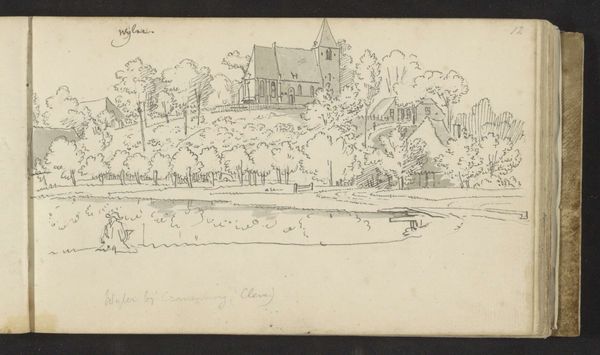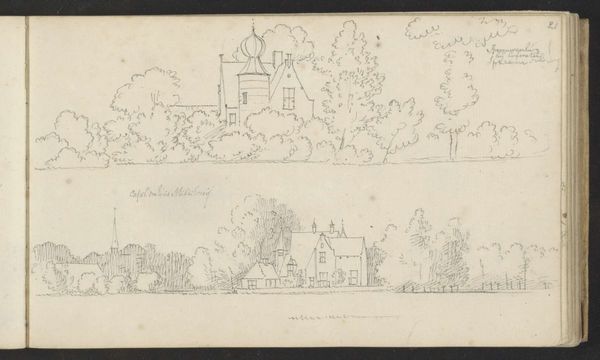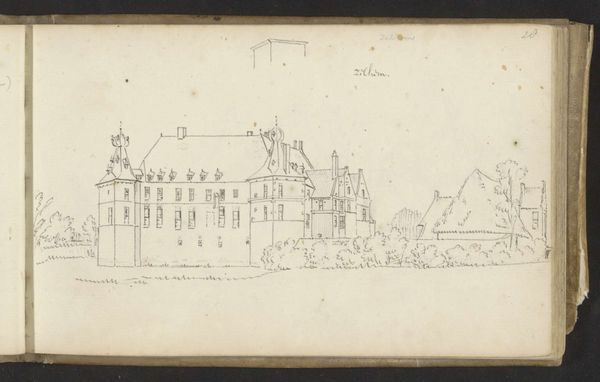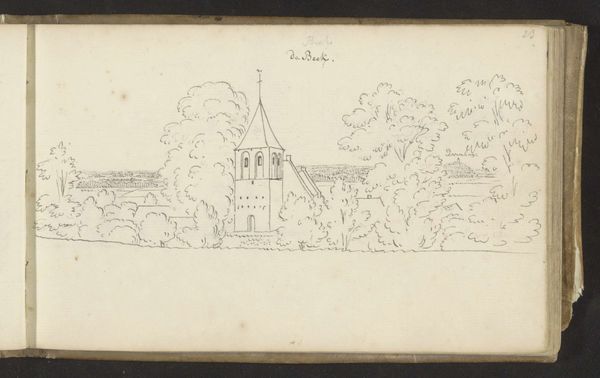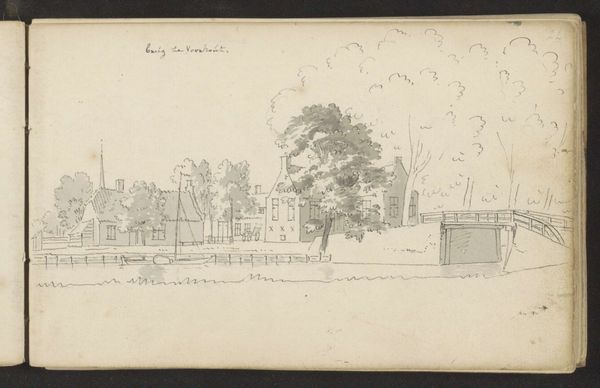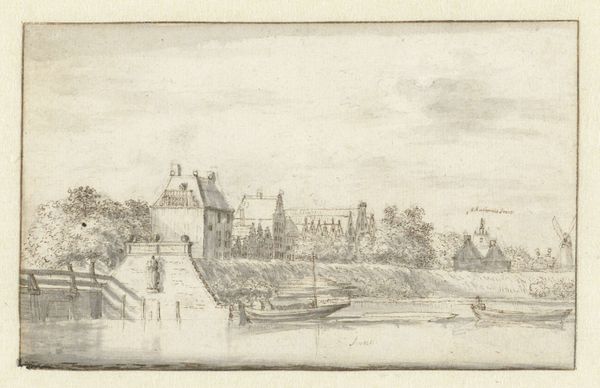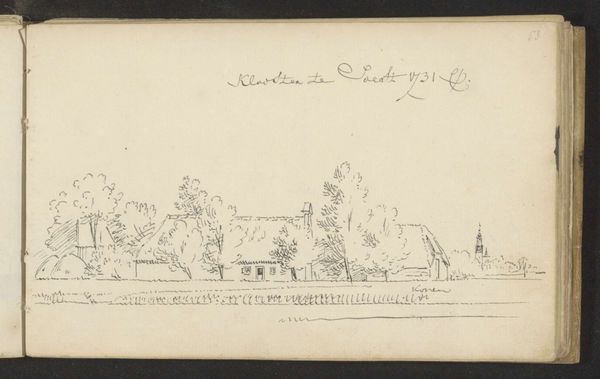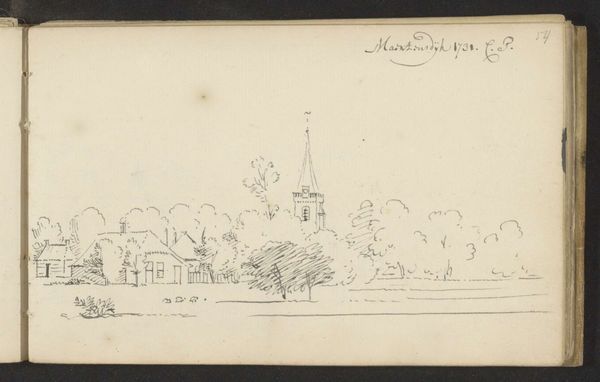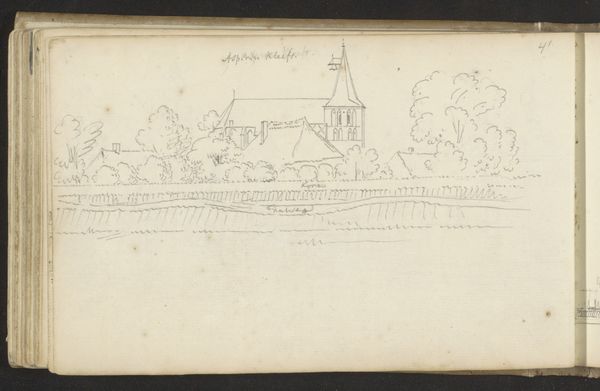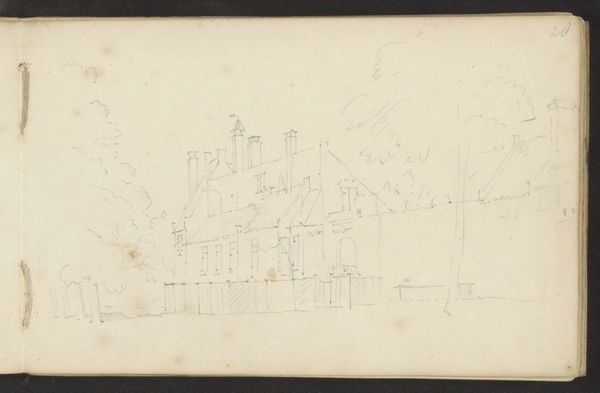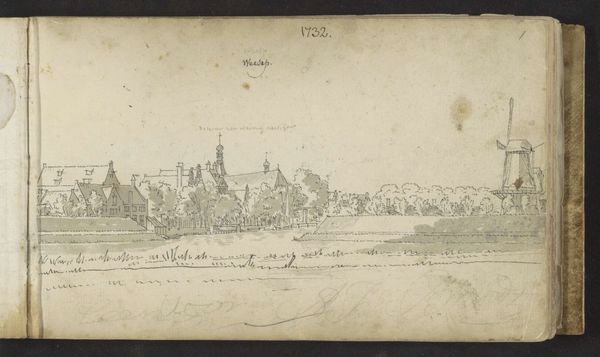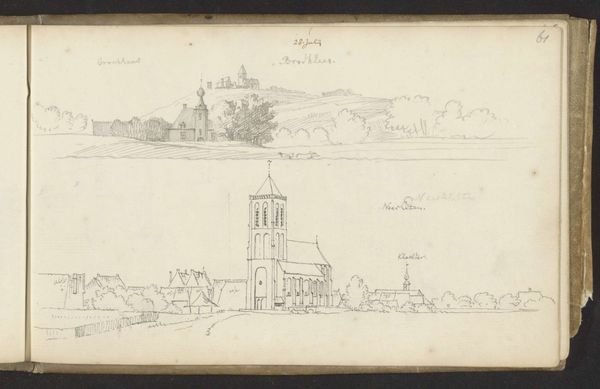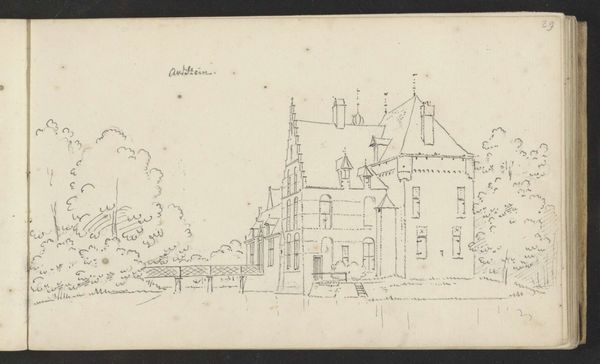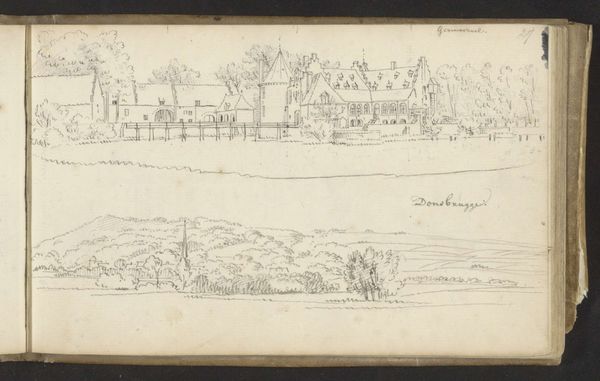
Gezichten op Nütterden en Burg Driesberg bij Kessel aan de Niers Possibly 1732 - 1736
0:00
0:00
drawing, paper, ink, pen
#
drawing
#
quirky sketch
#
baroque
#
sketch book
#
hand drawn type
#
landscape
#
paper
#
personal sketchbook
#
ink
#
sketchwork
#
pen-ink sketch
#
pen work
#
sketchbook drawing
#
pen
#
cityscape
#
storyboard and sketchbook work
#
sketchbook art
#
realism
Copyright: Rijks Museum: Open Domain
Curator: Editor: This is "Gezichten op Nütterden en Burg Driesberg bij Kessel aan de Niers," a pen and ink drawing on paper, made sometime between 1732 and 1736 by Abraham de Haen the Younger. It has a very personal, almost diary-like quality to it, doesn't it? What do you make of it? Curator: The immediate thing that strikes me is the social and material relationship embedded in a work like this. A bound book, relatively cheap paper, accessible ink – these were commodities shaping the landscape genre in this period. De Haen’s landscape isn’t some romantic ideal; it’s tied to burgeoning capitalist print culture and readily available goods. Editor: That's a really interesting angle. So, instead of seeing it as a purely artistic expression, you’re suggesting we consider the conditions that allowed it to exist? Curator: Precisely. Think about the labour involved in producing the paper, grinding the ink, the bindery constructing the book. De Haen's casual sketches depend entirely on the invisible labor that allows him to simply pick up a pen and record his impressions. It’s the commodification of art supplies. Editor: So the relative ease with which de Haen could produce these landscapes, that accessibility of materials, becomes part of the meaning itself? Curator: Yes. Furthermore, where was this book made? How was it used? Was it meant to be sold? Did de Haen make use of the landscape to get commissioned work afterwards? These kinds of sketchbook landscapes played a vital part in artistic knowledge transfer. Editor: So, considering this work beyond just its aesthetic qualities opens up whole new avenues for understanding 18th-century artistic practice. I never thought about landscape in that way before, as a reflection of emerging markets for art supplies. Curator: Exactly, by viewing this through a Materialist lens, it moves from simple aesthetic beauty to social commodity.
Comments
No comments
Be the first to comment and join the conversation on the ultimate creative platform.
